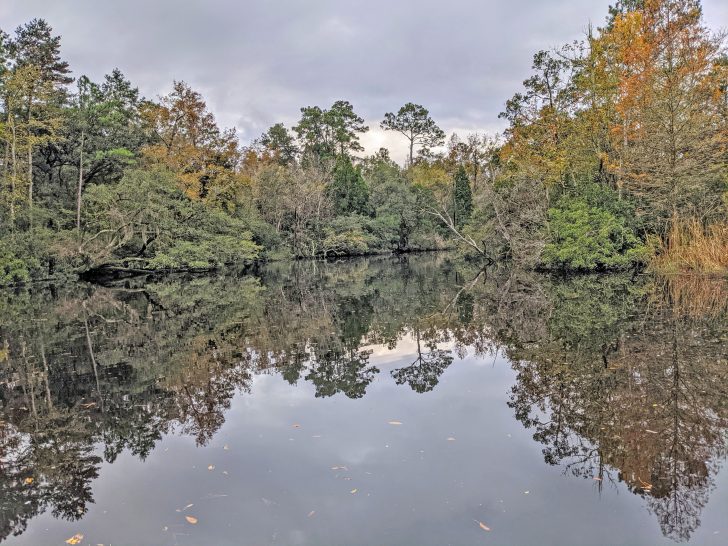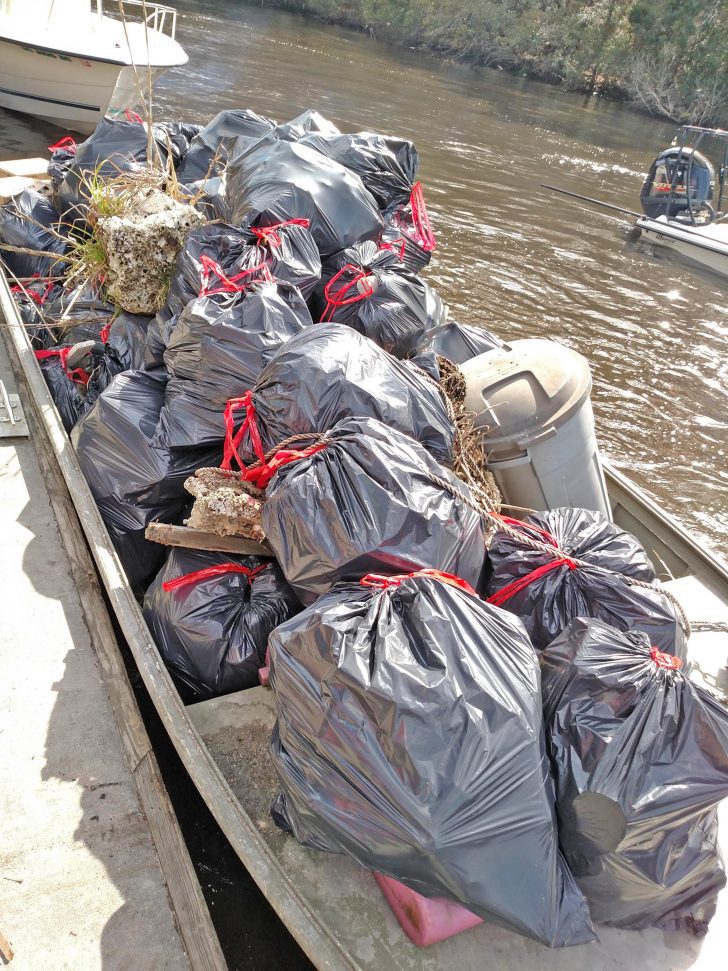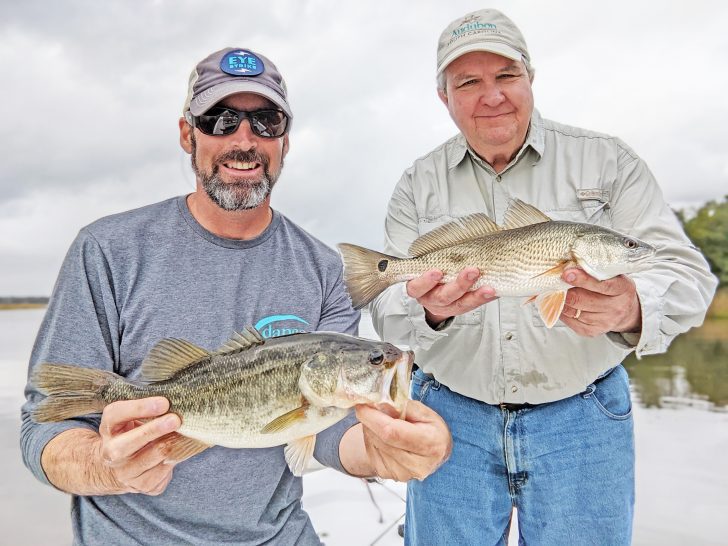Artificial Intelligence | David Fladd | October 2021
On a brisk October morning, the sun is streaming through the trees along the bank as I ease off plane and prepare to make my first cast.
There is not a dock or house in sight, and the steam rising off the water makes for a breathtaking scene that is worth taking a moment to drink in.
I make a cast along an old piling and get a solid thump. A gorgeous copper colored red drum comes to the net after a few drag-peeling runs.
This place is one of my favorite and most underappreciated places in Charleston: the upper Ashley River.
I can’t help thinking this scene must be what the early settlers of Fort Dorchester, or residents of Middleton Place, Drayton Hall and Magnolia Gardens must have experienced.

The upper Ashley is largely undiscovered, even to residents of Summerville, probably because it is mostly out of sight, out of mind along most of its length.
The lack of development along its banks is intentional. Due to the tireless efforts of people like George McDaniel and the Ashley River Scenic Advisory Council, the historic nature of the river has been mostly preserved but is under constant threat.
The Ashley is freshwater in Summerville, and changes from brackish to saltwater at the Charleston harbor
George, former Director of Drayton Hall Plantation, was instrumental in preserving the “view scape” across river from the historic plantation.
As he has described, to experience history by walking the grounds, you don’t want to look out across the river and see high rises and apartment buildings.
The result, for the angler, is a river that seems like you’ve gone back in time when you are fishing it.
The Ashley is freshwater in Summerville, and changes from brackish to saltwater at the Charleston harbor, over roughly 20 miles.
Naturally, that means you can catch largemouth bass, catfish, redfish, speckled trout and everything in between in the river depending on where you fish it.
The river is tidal all the way to the end and can have a fast flow on the moons.
The river has an unfortunate reputation for trash, especially in the upper region. One reason is that the river has a high population (Summerville and Ladson) at its headwaters, and because of its length, if you were to drop a bottle in the river at high tide it would not reach the harbor by low tide.
So, trash tends to remain and accumulate in the river. People have blamed fishermen, but I disagree. I’m convinced the trash comes from roadside ditches that then get flushed into the river by heavy rains.
I’m proud to have helped organize a large river cleanup effort that has removed over 20 tons of litter with noticeable improvement.

Now, if we can get people to stop being lazy slobs! Littering makes me angry, but I come by it honestly.
Of the three main rivers in Charleston, the Ashley would be ranked a distant third for productivity by anglers.
I think the main reason is a lack of water clarity. Unlike the other rivers that have more hard “marl” bottom, limestone deposits, or oyster shells, the Ashley is mostly soft mud.
Its pretty common to have less than 6” of visibility in the warm months.
However, when the water cools and kills off the algae, we get enough visibility to make fishing artificial lures a possibility.
To fish the Ashley productively, you must fish the history. By this I mean that history has left us structure, and structure holds fish.
The kinds of historical structure you will find are pilings from old docks from phosphate mining or plantations, old roadbeds, rice field “trunks”, submerged timber, etc.
In addition, try the cuts and points in grass lines, and feeder creek mouths of which there are many.
Since water clarity is lacking, you will do well to appeal to multiple senses, not just sight, when fishing artificial lures.

Use scented lures and/or lures that have rattles or create a vibration to improve your results. Another tip is to fish the river between the moons when the flow is minimal, which will improve the clarity.
Also remember that fresh water is less dense than salt, so the middle and bottom of the river will be more saline.
Productivity of fishing is hit or miss. In 2014, the year before our 1,000-year flood, the fishing was spectacular. It was so good that Ralph and
I kept it quiet. Ralphs friends would say “You’ve been awfully quiet, you’re on a bite, aren’t you?” (shrug). Every Fall, we make a few exploratory trips down the river to see if the fish are there.
I’m sorry to say it never has been as good as 2014 and in fact has been very disappointing. Our approach is to launch in Ladson at Jessen Landing and go downriver until we start catching fish.
Often, that doesn’t happen until we get to Magnolia Gardens.
I’m concerned it may never be as good upriver again. It turns out that the watershed of the Ashley extends north from Summerville all the way to Lake Moultrie.
This is the general location of Nexton, an area of aggressive growth. Paving the land prevents water from percolating and instead drains toward the Ashley, resulting in an increase of fresh water flushing down river.
The watershed of the Ashley extends north from Summerville all the way to Lake Moultrie
I hope that my concerns are unfounded, and we continue to try. Even if the fish aren’t biting well, I very much enjoy spending a day trying.
It’s truly one of the most beautiful places in the greater Charleston area. As of this article being published, we should have a decent idea whether the fish are biting.
And if they are I’m gonna be quiet, and if I shrug when you call me on it, you’ll know!
David Fladd
Partner, Eye Strike Fishing
dfladd@eyestrikefishing.com
eyestrikefishing.com
You may also enjoy reading..
Float Your Way To Fishing Success
Becoming A Puppeteer Fisherman






